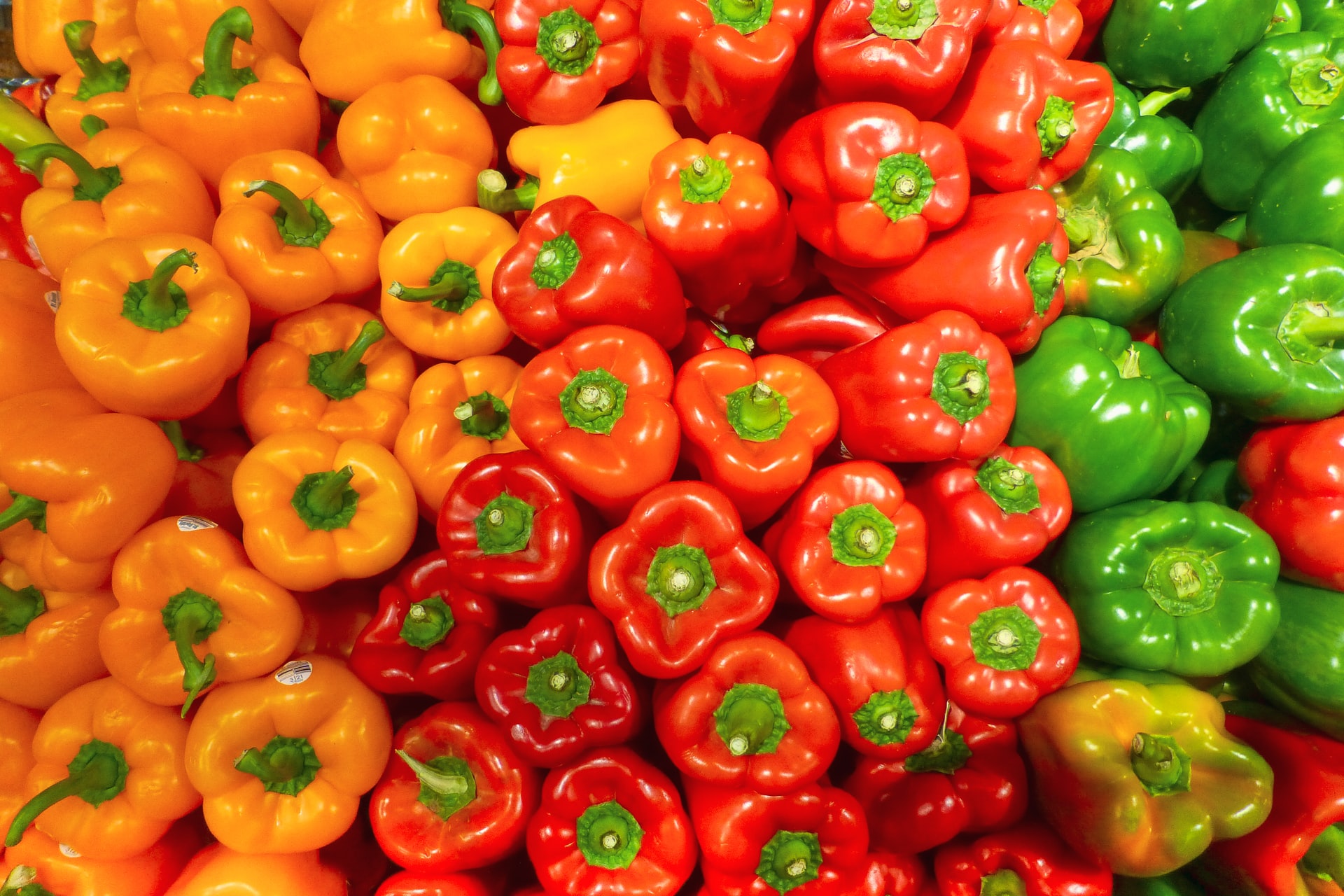
Charting the Mexican Bell Pepper Production Landscape
Bell peppers are important crops for Mexico in terms of domestic consumption and exports. The bell pepper production volume in Mexico satisfies 100% of the domestic demand. (p. 24) With an annual production of about 3.2 million tons and with more than 9,200 hectares of planting ground, (p. 4, 13) Mexico also produces the second largest yield of bell peppers in the world next to China (p. 12) and is the top global exporter of bell peppers in the world.
These trends show that Mexico’s bell pepper production significantly contributes not only to the local demand, but also to the global supply, as well. Let’s dive deeper into the Mexican bell pepper production landscape.
The Science Behind Bell Pepper Production in Mexico
Bell peppers are grown either by transplanting or by direct sowing, which is the most widely used planting technique in Mexico. Through a mechanical seeder, bell pepper seeds should be calibrated to deposit 100 to 120 seeds per linear meter per row, at 2 or 3 centimeters. When done manually, 10 to 15 seeds are sown per bush.
50.3% of bell pepper production in Mexico is in open fields, but only 29 hectares of the entire bell pepper production acreage are rain-fed.
For directly-sown Mexican bell pepper cultivation, Sinaloa is the top Mexican state. It has the largest open-pit area (3,266.44 hectares) accounting for 35% of the total bell pepper production acreage in the country.
49.6% of Mexican bell pepper production is diversified among different protected agriculture processes. Bell pepper production in greenhouses accounts for 14.3%. Transplanting means the sprouts are moved into greenhouses for growing. Crops are placed within 30-to-40-centimeter distances, 25 centimeters between rows in a zig-zag arrangement, with beds at a distance of 1.2 to 1.6 meters between each other.
For this type of bell pepper cultivation, Jalisco and Guanajuato are leading producers, both accounting for 6% of the total area.
Meanwhile, bell pepper production under shade mesh is 35.4%, and macro tunnel and organic production each comprise 0.1%. (p. 13-14)
Mexican Bell Pepper Exports
Mexican bell pepper is the fourth most exported agri product, accounting for 7.44% of total agri exports. (p. 28) This volume brings Mexico as the top exporter of bell peppers in the world.
The peak season of Mexican bell pepper production takes place between December and March. 29.71% of the total produce is destined for exports. (p. 21) The Mexican government’s Agri-Food and Fisheries Information Service has specified various categories for crop production in the country. For Mexican bell pepper exports, the country allotted 4.9% for open fields, 0.3% in green tunnels/houses, and 13.4% in shade mesh. (p. 13)
A huge volume of Mexican bell peppers are being exported to the US, which receives about 982.48 million tons of bell peppers. This is about 99.73% of the Latin American country’s bell pepper exports. Other importers of Mexican bell peppers are Canada, Guatemala, and Spain. (p. 24)
Some of the main Mexican bell pepper suppliers are the following organizations:
- Productos Elupac SA De CV
- Francisco Javier Ssanchez Tapia
- Asociaciones Agroindustriales SA De CV
- Tomas Ibarra Martinez
- Comercio Dinamico SA
Forecasts of Mexican Bell Pepper Production and Export
Mexican bell pepper production is estimated to further increase in the coming years. By 2024, its yield is anticipated to reach 3.68 million tons, representing a 19.94% cumulative growth and export value of USD 1.48 million.
In turn, the increase in production will also bring an expected growth in Mexican bell pepper exports to 2.11 million tons by 2024, representing a 41.9% increase, compared to 2018 exports. (p. 23)
By 2030, global bell pepper demand is also anticipated to increase to 8.10 million tons, a cumulative growth of 28.57%. Meanwhile, in the same period Mexican bell pepper production is forecasted to reach up to 4.02 million tons, a cumulative growth of 22.44%. This growth will allow Mexico to allocate 2.75 million tons of bell pepper for national consumption and 1.29 million tons for exports. (p. 44)
ProducePay: Connecting Buyers to the Best Mexican Produce Growers
ProducePay empowers produce buyers and sellers by helping them make the best decisions when it comes to importing and exporting crops like Mexico’s bell peppers. ProducePay provides the Marketplace, a platform that brings produce growers from various regions, including in the US and Latin America, opening up buyer access to thousands of trusted growers.
At the same time, produce growers can access ProducePay’s Quick Pay Financing service, which allows farmers to receive up to 90% of their shipment value up to 24 hours after a buyer confirms its reception within the Marketplace.
Contact us to know more about how the ProducePay Marketplace can assist with your produce business.
Source:
